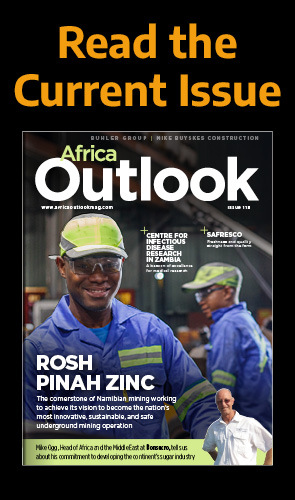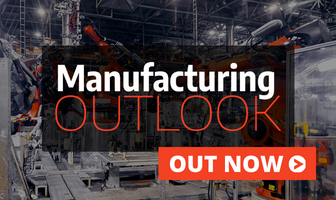Manufacturing plays a crucial role in wealth creation, but success in developing the sector in Africa has proved elusive. That’s about to change, argues Nick Crasner.
Manufacturing is a key wealth-producing engine in any economy, and Africa is the world’s second-largest and second most populous continent.
One could therefore reasonably expect a large African workforce to be the driving force behind the wealth of the continent and the future of its economies. Yet there are big challenges, and we need to take a clear-eyed account of them while looking at the opportunities.
Very few economies have been able to develop independently, and accumulate wealth, without a burgeoning manufacturing industry; and there is a direct link between high export levels and economic success. Development of a strong manufacturing industry will therefore be pivotal in Africa’s success.
Africa produces only 1.5 percent of the world’s total manufacturing output, contrasting starkly with 21.7 percent in the Asia-Pacific region, 17.2 percent in East Asia and 22.4 percent in North America. Manufacturing accounts for only a quarter of exports from sub-Saharan Africa, again, in contrast to Asian manufacturing, which once more tops the scale at around three-quarters of exports.
Moreover, fewer than one in 10 African workers hold a job in the manufacturing sector and according to a 2012 report by the World Bank, ‘Performance of Manufacturing Firms in Africa’, the manufacturing sector accounted for only 13 percent of GDP in sub-Saharan Africa, a smaller share than any other area, bar the Middle East and North Africa (MENA).
HARNESSING AFRICA’S POTENTIAL
Undeniably, Africa’s vast population of more than 1.2 billion people provides a ready market for the strong manufacturing it has the potential to develop. Increasingly, investors are re-evaluating this African consumer market, especially consumer-related manufacturing industries. Particular success stories are the automotive sector in South Africa, the leather business in Ethiopia, the Lesotho garment industry and pharmaceuticals throughout East Africa.
Several issues face the manufacturing sector on the African continent; problems not only with the labour force and infrastructure, but also conflict, corruption and instability. Large hurdles such as these tend to deter the long-term capital necessary for the progress of manufacturing on the continent.
Throughout Africa, labour has very low productivity compared to rates elsewhere, a direct result of relevant skill shortages owing to poor education levels. According to a KPMG report entitled ‘Manufacturing in Africa 2014’, the small economies of Gambia and Madagascar are best-rated for productivity, followed by Rwanda, Kenya and Mauritius; while South Africa, Namibia, Egypt and Algeria are at the lower end of the productivity scale. In South Africa, this is mainly down to the political power of trade unions. Various initiatives are underway across the continent to improve education. However, we may have to await a new generation to assess their effect.
DEVELOPING INFRASTRUCTURE
Infrastructure, in the form of roads, electricity and access to a reliable supply of water are also vital for the development of the manufacturing sector. According to the ‘Quality of Transport Infrastructure’ index, which forms part of the World Economic Forum’s Global Competitiveness Index, only 10 African countries are ranked in the top half globally. Further, only five are ranked in the top half for ‘Quality of Electricity Supply’.
Thus, while South Africa has the best roads on the continent, its lack of reliable electricity is a huge problem, particularly since November 2014 when Eskom, the public power supplier, reintroduced a countrywide schedule of load-shedding to relieve excess pressure on generating plant. This resulted in mines and factories reducing output, while external capital sources pulled back on foreign direct investment.
Yet utility provision is improving in certain parts of the continent. Ethiopia, the DRC, Cameroon, Zambia and Mozambique have vast hydropower plans, while Nigeria is in the process of privatising its power sector and Ghana is completing a gas processing project that will take the strain off the electricity sector, which has seen shortages.
More broadly, the age-old barriers of conflict, corruption and instability must be addressed to encourage investment in manufacturing and with them the needless bureaucracy that inevitably stifles job creation. These are the responsibility of African governments themselves. In Nigeria, for example, the government has taken the initiative and curtailed imports in cement and used vehicles, and this has led to a rise in domestic manufacturing of cement and automotive assembly factories.
High transport and input costs, patchy infrastructure, low labour productivity, duties and bureaucracy are all obstacles to be overcome if Africa is to create a successful, sustainable manufacturing sector. Yet, there is good reason for optimism.
INTERNATIONAL INVESTORS
From talking to business leaders and officials in Africa, I believe there is a growing awareness of the need to address these issues head on. Meanwhile, some of the more dynamic international operators are staking their claim. The US conglomerate, General Electric is building a $250 million plant in Nigeria to manufacture electrical gear. In Madagascar, the New York-based chocolatier, Madécasse is adding to its 650-strong workforce by turning raw Madagascan cocoa into up-market, wrapped chocolate bars. Multinational retail companies such as H&M and Primark have recently been sourcing much more of their material from Ethiopia.
Other forces are working to create a more dynamic and inclusive business environment, with huge implications for Africa and its future generations. On the technology front, the phenomenal success of the mobile-phone based money transfer and micro-financing platform, M-Pesa in East African countries such as Kenya and Tanzania has opened the door for technological manufacturing enhancements in the future.
AFRICA’S SILICON SAVANNAH
The $14.5 billion Konza project outside Nairobi, also known as ‘Africa’s Silicon Savannah’, is expected to create 20,000 jobs by 2018 and 200,000 overall within the next 20 years. This is a great chance to adapt a fast-developing US/European urban model and make it succeed in an African context.
In addition, small and medium businesses continue to take advantage of their local manufacturing surroundings all over the continent. In Pietermaritzburg, South Africa‘s Truda Snacks, a local corn and maize snack company, has thrived by manufacturing a low-cost product of reasonable quality using local ingredients, with high bulk density and low shelf life, in the process tackling competition from Asia head-on.
The World Bank has suggested that more than 80 million manufacturing jobs could migrate from Asia to Africa in the future; assuming African labour productivity continues to rise and Asian wage pressures increase. This prediction is already taking substance in Uganda, where the average cost of manufacturing has already begun to fall as a result of improved infrastructure and more relaxed global export barriers.
Africa is winning over financial investors too, such as the UK fund manager, Terry Smith. Launched in 2014, his Fundsmith Emerging Equities Trust is backing consumer staple stocks including, East African Breweries, Famous Brands, Fan Milk and Nigerian Breweries. The investment trust’s weighting to Africa is higher than most emerging market funds, with South Africa its biggest bet on the Continent, followed by Nigeria, Kenya and Egypt.
GROWTH POTENTIAL
Lesotho provides a strong example of what can be achieved by adopting a strategic approach to developing a vibrant manufacturing sector. A landlocked country of two million people within South Africa, it generates 100 times that country’s exports of apparel to North America on a per capita basis. Lesotho made foreign direct investment attractive by putting the necessary rail and distribution infrastructure in place.
For the foreseeable future, the services sector will still generate more wealth and jobs in Africa than manufacturing. However, if Africa takes a comparable path to that of India, which for two decades has boomed on the back of services while steadily building its manufacturing sector, now could be the ideal time to explore the growing potential of manufacturing on the continent.
ABOUT NICK CRASNER
Nick Crasner is CEO of Crasner Capital (www.crasnercapital.com), an Africa-focused boutique investment bank and corporate finance firm based in London, providing capital raising, financial advisory, strategic development, mergers & acquisitions and fund placement advisory services to the emerging markets.
By Nick Crasner, CEO, Crasner Capital
To view the full article in our latest magazine, click here.
































